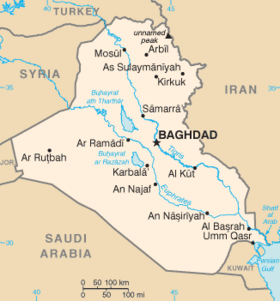After Iran's failure to capture Basra during the sixth Battle of Basra (Operation Karbala-5), Iran's military entered a period of self-reflection, and possible decline. Iranian morale was decreasing, and many of their experienced infantry from the Revolutionary Guards (Pasdaran) became casualties. Consequently, the Iranians increasingly relied on their regular army to fight the war. In addition to the army being conscription based, the Iranians became increasingly war-weary. The front in the south of Iraq had become a stalemate. Iran was unable to penetrate the massive Iraqi defenses. Meanwhile, Iraq for the time being remained unable to drive the Iranians back[citation needed], but they had begun to re-arm with the help of friendly nations and foreign allies[citation needed], and were practicing maneuvers in preparation for the upcoming operations against the Iranians[citation needed]. By 1988, Iraq grossly outnumbered Iran in men and military hardware[citation needed]. Nevertheless, Iranian commanders remained skilled and adept[citation needed]. They focused on tactics that would negate superior Iraqi firepower[citation needed]. Nevertheless, they were unable to capture cities in central and southern Iraq due to a combination of poor logistics, shortages of armor, and Iraqi firepower[citation needed]. Iran's leadership also announced that they would arm and support opposition groups inside of Iraq. One of those opponents was the Peshmerga, the Kurdistan resistance force, which primarily launch limited offensives of their own.
While the war in the south had bogged down into a stalemate, Iran began focusing on Kurdistan, which was in a mountainous region in northern Iraq. Being mountainous and thus unsuitable for armored warfare, Iran had launched multiple attacks starting from late 1987 to early 1988. They were supported by the Peshmerga, which they helped and gave supplies to. While Iran would not capture any major cities, with the help of the Peshmerga's guerilla warfare, using area denial tactics, large swaths of Kurdistan were rendered outside of Iraqi government control. Saddam Hussein ordered the Al-Anfal Campaign, resulting in as many as 50,000 rebels and civilians murdered. The Al-Anfal campaign was led by Saddam's deputy Ali Hassan al-Majid, infamously known as "Chemical Ali" due to his use of poison gas. Nevertheless, with Iranian support, the Iraqi attempts were unsuccessful[citation needed], and were a major headache for Saddam and his deputies[citation needed].
